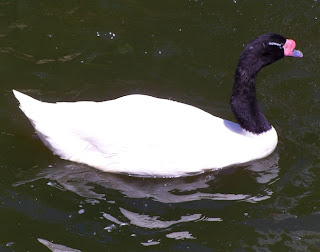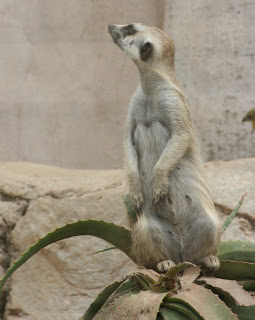The Black-necked Swan, like its nearest relatives the Black and Mute Swan is relatively silent. Also, unlike most wildfowl, both parents regularly carry the cygnets on their backs. The female lays four to six eggs in a nest of vegetation mound. The diet consists mainly of vegetation, insects and fish spawn.
 This is one of the species og Gaint Platted Lizards we have here. Their diet includes: flowers, leaves, figs and other soft fruit, but will also eat small lizards; even baby tortoises.
This is one of the species og Gaint Platted Lizards we have here. Their diet includes: flowers, leaves, figs and other soft fruit, but will also eat small lizards; even baby tortoises.
It is considered one of the bare-faced tamarins because of the lack of facial hair. Its lower canine teeth are longer than its incisors, so it seems as if it has small tusks. It is about the size of a squirrel and weighs 10-18 ounces. The Cottontop Tamarin is most active between sunrise and sunset (diurnal), it spends a large portion of its activity time foraging for animal prey, searching through leaves and along branches, and peering and reaching into holes and crevices in branches and tree trunks.


This bat is about 6 inches in body length, one of the biggest I have seen.


The Banded Mongoose litters average 2.6 young per female. Within a pack, litters are produced in synchrony after a gestation period of eight to nine weeks. Collective nursing of offspring takes place. Breeding is normally restricted to the rainy season, and during her life time a female average 1.4 litters per year.

Suricates spend a lot of their time on guard, looking out for predators. (Meerkat is a South African Dutch word meaning 'lake cat' since Meerkats are often found near stretches of water.) Suricate (Meerkats) are diurnal. They live in colonies of up to 30. The groups consist of 2-3 family units comprising a male, a female and their 2-5 young. They usually inhabit the burrows of ground squirrels, which they enlarge by digging with their sharp claws. When emerging from their burrows in the early morning, they tend to sunbathe before spending the day foraging for small prey.


No comments:
Post a Comment